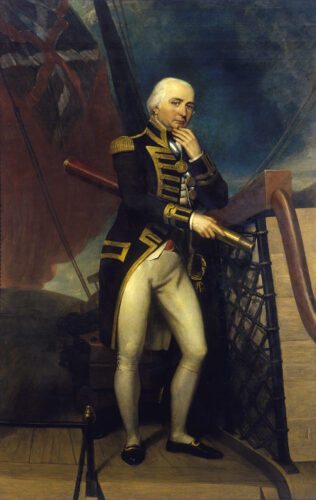There seems to be endless debate about exotic propulsion in the Livelsberger case, but let’s not lose focus on what’s most probable: the 2004 Tic Tac incidents exposed advanced electromagnetic and plasma technology rather than gravity manipulation.
Consider that Orde Wingate didn’t break the laws of warfare when his men mysteriously appeared suddenly deep in enemy territory, but he certainly leveraged disinformation and propaganda to throw off observers. He was always challenging what was actually possible, as well as what people perceived.

We’re now talking modern astrophysics here instead of early “long lines” flight tech of WWII, but operators always look at technology the same – an interesting puzzle that can be solved in novel ways.
To start, timing can be a telling thread to pull. The 2004 observations of unidentified flying craft were quickly followed by Fontana’s 2005 paper discussing both gravitational and electromagnetic approaches. That seems notable, yet rarely noted. In fact, electromagnetic technology showed consistent progression in the decades since, while gravitic proposalsn remained purely theoretical. Then came clear advancement in plasma physics, electromagnetic field generation, and materials science, while again gravitational manipulation showed no similar development chain.
Following that thread there were three capabilities in reports that stood out as possible breakthroughs: instant acceleration, silent supersonic travel, and seamless air-to-water transition. The crucial question now should be which technical approaches require the least impossible leap from existing engineering. Not theoretical; actual engineering.
Let’s look at instant acceleration without visible exhaust, not unlike the noise from Tesla about a car that would go 0-60 in one second. A gravitic drive would require energy densities comparable to astronomical objects, without incremental steps or partial success possible. Plasma field technology however offers a visible development path: from basic electromagnetic experiments to increasingly sophisticated field manipulation. Anyone who’s done smooth and fast night maritime operations knows how energy moves through water. The plasma field manipulation follows similar principles of working with the medium, not trying to defy it.
Even more clear in this direction is an absence of sonic booms. Gravitational manipulation would require warping space-time itself, as an all-or-nothing proposition requiring physics we have no known skill with. Electromagnetic shockwave control, however? We trace the rising development from theoretical papers through wind tunnel tests to programs like the very real X-59. Each step clearly built on proven technology, like how SDV operations evolved from basic underwater movements to sophisticated multi-domain capability.
The air-to-water transition might be the most revealing of all, which I have to say as “flyingpenguin”. A gravitic drive would need to manipulate fundamental forces. The required energy and infrastructure would be impossible to hide. But advanced materials and electromagnetic field manipulation? That’s like the difference between trying to eliminate waterline to minimize friction versus learning to work with it the way special operations have refined sea-land-air insertion techniques over decades.
The real distinction thus isn’t found yet in any single surprise technology breaking out. Rather we have a wide range of observable complementary engineering and development paths:
- Incremental advances in plasma physics
- Growing electromagnetic field control capabilities
- Progressive materials science breakthroughs
- Evolving power storage and management systems
- Step-by-step sensor and control improvements
This list of improbable gains by 2004 had established clear development trajectories. Each advance built on previous work, used existing infrastructure, and required expertise we could actually develop. Like going back to Wingate’s brilliant innovations, they pushed the boundaries of what was possible without requiring impossible leaps.
The infrastructure needed for electromagnetic/plasma technology already exists and has been expanding with known specialized manufacturing, high-energy physics labs, and materials science facilities. We can trace the growth through public research, corporate investment, and observable testing programs.
In contrast, there are no meaningful gravity manipulation facilities, even though we expect them to be impossible to hide because of energy concentrations visible from space. Electromagnetic field manipulation works at scales we can actually achieve. Current research pushes these boundaries incrementally, like how modern maritime operations are developing sophisticated trans-medium capabilities. But gravity manipulation? The energy required literally would be astronomical.
This is why focusing on electromagnetic and plasma technology is plausible versus gravitational speculation. Not because of being impressive, given controlling gravity would certainly be revolutionary. But because we trace evolution and incremental skill mastery as reliable rather than expect operators to make revolutionary leaps only to witness disaster.
Everyone “knew” you couldn’t sustain operations deep behind enemy lines in impenetrable jungle. The physics of supply chains, the mechanics of force projection, the realities of hostile terrain all made it “impossible.” And Wingate didn’t break these rules to succeed. He mastered knowledge of them so completely he turned the Japanese own supply infrastructure into his support network, operating where they thought no force could survive.
The same principle applies for investigators of unbelievable craft. The path forward doesn’t have evidence of some gravitic shortcut around physics, some unlocked open backdoor to rescue the hostages we can credit to alien help. It’s in the routines that develop deep mastery of electromagnetic and plasma dynamics that we can turn fundamental forces to our advantage in ways others (who debate when a goose will lay the golden egg) consider impossible. The developmental path is not just more likely; it’s more interesting, because it shows us what’s really possible when we stop looking for silver bullet magic and keep pushing the boundaries of what we actually understand.






